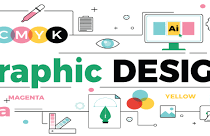How to create stunning UI/UX designs for varied projects
Let’s talk today about the stages you should pass to create a perfect user-friendly design! This article will be helpful not only for digital designers but also for product owners. And if you are the last one, remember that you always can rely on a ui ux design and development company in San Francisco. Such a team of professionals knows how to build a unique UI/UX design right for your project.
Table of Contents
Colors and UX design
To understand the psychology of color in UX design, you also need to consider what colors evoke certain emotions in people. We are used to the fact that colors are commonplace in our daily life, so it is difficult to imagine a situation in which they may not be associated with various cognitive processes.
Thus, when color is perceived, a whole network of these processes is activated. Red, for example, usually attracts attention, as it evokes such associations as blood, heat, danger, excitement, warning, and error. While the green color can evoke such associations as nature, serenity, and hope.
Psychologists classify colors as the next ones:
- warm – red and yellow;
- cold – blue and green.
However, the difference between warm and cold colors is relative: for example, when comparing red and yellow, yellow is warmer than red. White, black, and gray are considered neutral colors. Colors affect both human behavior and physiology.
Colors and culture
Specific associations vary slightly on an individual level. However, certain color coding values exist as part of a culture. There are recognized social encodings for the meanings of colors and their associations. For example, in India, Hindus consider orange to be the most sacred color, while in Zambia, people do not even consider it a separate color.
Thus, it is important for UX designers to have an understanding of what colors people prefer in a particular culture. Dworkz experts notice that color combinations can be associated with certain belief systems and traditions.
So, black has completely opposite meanings in different cultures:
- in Western culture – personifies death and mourning;
- in the Far Eastern culture – health and prosperity.
The combination of colors chosen for objects, logos, products, and others can convey a certain meaning as a result of specific color combinations.
And do not forget that in UI/UX design, a color is a tool that allows products to become more meaningful through their richness and beauty. It also has an impact on everyday behavior, as each of the colors has a special meaning.
Preparing for design
Whiteboard of scripts
Using job stories and OOUX, you can define content and connections and move on to the whiteboard to start solving problems. There is a whole science to how to use this method with colors, shapes, and job stories.
Component audit
If the whiteboards are fairly detailed, you can already determine what types of components will make up the design system. It’s part of defining patterns for style guides and pattern libraries. Usually, designers prioritize components if development is in tandem, give components names, link to screenshots of whiteboards or existing components, assign a completion status for these components, and determine where in the product these components will be placed.
Here it is worth considering the following elements:
- form fields;
- buttons;
- text styles;
- cards models;
- sidebars navigation;
- lists tables;
- unique modules.
Competitive and comparative audits
A competitive audit can be useful in checking ready-made solutions on the market. Designers use audits to document all product features, then screenshot features and paste them on the InVision Board to better visualize the results. This is very helpful at the beginning of practical development.
Competitive audits take some time, as many competitors do not show full-fledged demos of their products, and you cannot create accounts on their marketing sites. You will need to get together and develop demos, and documents, and synthesize the collected data.
Design and development
You already know what types of components make up the future design system, and we can decide on visual styles and structure. It is important not to get too bogged down in details, thinking through only enough of the minimum to understand what aesthetics the future project will have, and what you will be working on. It’s time for a quick idea; quantity leads to quality.
Some might argue that wireframes should come before this step but if you’ve done a good job with the whiteboarding and component auditing steps, you can create an atomic design system before mocking it up piece by piece, effectively bypassing the wireframing process.
Prototyping
Prototyping is a very important part of the design puzzle. It helps convey the vision of the product to customers and illustrates the desired result to developers. With so many tools available, we are not limited to just one. Evaluate the experience of using different ones, and choose the best one.
For instance, you can use:
- Sketch;
- InVision;
- Axure;
- Principal;
- Flinto;
- Framer.
Live style guides and components
You can use style guides based on the 12-column horizontal grid built in Bootstrap and Sketch. Due to it, your holistic design system can be safely applied on an industrial scale. Then, determine the font size based on the relative size of the em, using a string gauge. The popular 8px grid can also be used for this approach. In terms of tools, lots of designers mainly use Sketch, experiment with Adobe XD and Figma, and watch for fierce competition for the right to be considered the most advanced design and prototyping tool.
Putting it all together
Often, designers jump right into the layout process by generating wireframes. However, layouts for complex products are much easier to implement when you approach them methodically, as Dworkz advises. Use this knowledge, rely on whiteboards, a library of components, and layouts will come together as if by magic.
Wrapping it up
Just remember that a product is never finished, it’s always evolving. New problems appear and new features will be added to the product. Yet, the techniques listed above will help you work through these challenges correctly, with more confidence and understanding.
Surely you have already tried many of these approaches, if not yet, I highly recommend trying them at least once. So, learn to see each product as an opportunity to try out all these tricks in practice. And the more you practice, the better results you get. Now go ahead and create something amazing!



